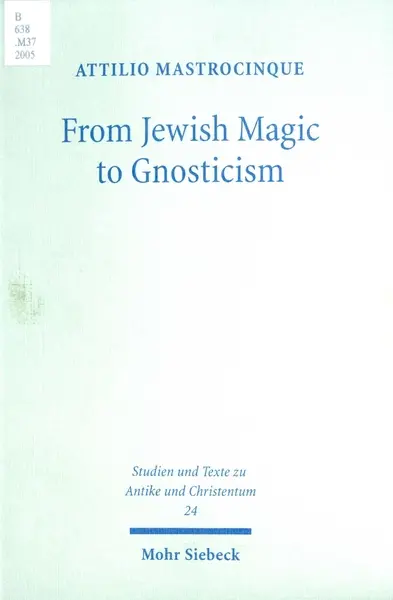
From Jewish Magic to Gnosticism
Mastrocinque A.
Год :2005 Количество страниц :244 Язык :Английский Категория :Исследования Скачать : PdfПоддержать :
Pliny the Elder spoke of a Jewish stream of magic. What is the relationship between this stream and Gnosticism? Why does Judaising magic in magical papyri and gems have scarcely any links with Christianity? In this book, Attilio Mastrocinque examines the intriguing connection between magic and Gnosticism. Both Christian Gnostics and other heirs to Hellenistic Jewish Gnosis were committed to the study of astrology and what were known as magic arts and doctrines. Heretical Jews in Egypt envisaged the creator god as a snake producing the Nile flood and destroying the giants; in the 2nd and 1st centuries BC the Jews of the Leontopolite temple believed in the manifestation of God as a divine lion-headed man, a young god, a Son of God, whose name was Jaldabaoth. In the 2nd cent. CE the Christians condemned these two heretical figures and developed new forms of Gnosis, which were described and condemned by orthodox Christian heresiologists. The old Jewish Gnosis evolved into private forms of religion, which amalgamated the Jewish god and several supreme pagan divinities and gave birth to the widespread Judaising magic of gems and papyri. The orthodox Christian Church came to identify the religion of the Gnostics with magic, and even now our concept of magic is strongly influenced by ancient Christian ideology concerning Gnosis.





